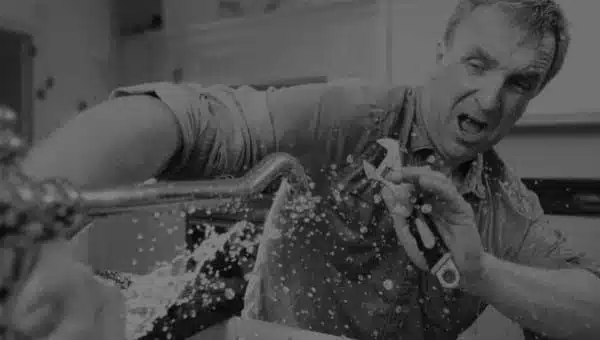Owning a new home is an exciting milestone. However, one of the challenges that new homeowners might face is a pesky water leak. It’s an issue that might seem minor, but if not addressed promptly, it can result in significant damage and expense. A water leak repair isn’t as daunting as it seems, and with the right information, it can be done efficiently. This blog post will delve into the anatomy of water leak repair for ceilings, walls, and under the floor.
Table of Contents
Understanding the Signs of a Water Leak
Recognizing a water leak in your home may not always be straightforward. However, there are certain tell-tale signs that can tip you off to a problem. Water stains or discoloration on your walls, ceilings, or floors are often the first visible indicators of a leak. Don’t ignore an unfamiliar musty smell either, as it could suggest the presence of mold or mildew – both potential signs of a hidden water leak.
Additionally, a spike in your water bill without a corresponding increase in usage can also serve as a red flag. These symptoms all point to the need for immediate investigation and potential water leak repair. Be proactive in monitoring your home for these signs to avoid further damage and escalating repair costs.
Locating the Source of the Leak
Pinpointing the origin of a leak is your initial step towards effective water leak repair. If your ceiling is displaying water stains, begin your investigation directly overhead, but keep in mind that water often follows a path, so the origin may not be directly above. Wall leaks may present themselves as damp patches or discoloration. These could be attributed to a plumbing issue or a breach in your roof’s integrity.
If you’re dealing with a leak beneath your flooring, possibilities include a faulty pipe or drain, or even more seriously, a slab leak. Slab leaks are particularly urgent, as they can lead to significant structural damage if not promptly addressed. All in all, determining the source of the leak is key to formulating your repair strategy.
Repairing Leaks in the Ceiling
To commence the process of a water leak repair in your ceiling, first and foremost, you must identify the root of the issue. This could be attributed to a breach in your roof or a malfunctioning pipe. Once you have successfully diagnosed the source and rectified it, the next step involves eliminating the affected drywall. This should be followed by thorough drying of the area to prevent further complications like mold or mildew.
After confirming the area is completely dry, you can proceed to install a new drywall piece in the void left by the damaged one. A final touch-up with paint to match the surrounding area, and voila, your ceiling should be as pristine as ever. Remember, addressing the issue promptly can save you from a more severe and costlier damage.
Dealing with Leaks in Walls
Wall leaks may be intimidating, but they can be addressed with a similar approach to ceiling repairs. Begin by detecting the root cause, which could range from a plumbing issue to a defect in your roofing. After rectifying the initial problem, the damaged drywall needs to be excised. Make sure you give the exposed area enough time to dry thoroughly, as any residual moisture can breed mold and mildew.
The next phase involves replacing the removed section with new drywall. Once this is done, finish off the repair with matching paint for a seamless blend with the rest of your wall. This methodical approach should effectively restore your wall to its original state. However, it’s essential not to delay these repairs to avoid escalating the situation into a more significant and expensive problem.
Handling Leaks Under the Floor
The task of dealing with leaks located beneath your flooring can indeed be a challenging feat. If the leak originates from a problematic pipe or drain, it will often necessitate the removal of some flooring to facilitate access to the leak and effectively carry out the needed repairs. This is where your investigative skills will come in handy, as you’ll need to identify the area of the leak and remove only the necessary flooring materials.
After the repair, make sure to replace the flooring correctly to ensure its durability and appearance. However, if the leak is a slab leak, the situation becomes more complex and requires a higher level of expertise. Slab leaks can lead to substantial structural damage if not rectified with accuracy and speed, which is why calling in a professional is highly advised. It’s also important to remember that swift action is vital, as these leaks, if left unattended, can cause severe damage to the foundation of your home and can escalate repair costs.
Prevention is Better Than Cure
It’s often said that an ounce of prevention is worth a pound of cure, and this holds true when it comes to maintaining the integrity of your home against water leaks. Regular inspections of your home, especially areas that are commonly susceptible to leaks such as your roof and plumbing system, can save you from substantial damage and repair costs down the line.
Observing your home closely for potential signs of leaks can help catch issues in their early stages before they escalate into major problems. Make it a habit to monitor your water bill as well, as an unexplained increase could indicate an unnoticed leak. Investing in high-quality materials for your home’s plumbing system is another preventive measure. Additionally, ensuring that these components are installed correctly can greatly reduce the chance of leaks developing in the future.
When to Call a Professional
While it’s commendable to take on small leaks with a DIY approach, some circumstances necessitate the expertise of a professional. Such instances include those where the leak source remains elusive, the extent of the leak is too significant to handle on your own, or the leak is originating from beneath the slab. These are scenarios where the skills and tools of a trusted plumber become indispensable.
They possess the knowledge and specialized equipment to tackle these complex water leak repair tasks effectively. Therefore, in these cases, it’s not just prudent, but essential to seek professional intervention. Your new home is a valuable investment and leaving water leak repairs to the experts can ensure your home maintains its integrity and value.
FAQs About Water Leak Repairs
Am I capable of repairing a water leak myself?
Cease the water flow to the pipes that are leaking and sanitize the vicinity surrounding the puncture that needs to be repaired. Utilize a metal file to refine any jagged contours that could potentially penetrate the patch. Utilize the patch and repair clamp to ensure that it uniformly covers the affected portion of the pipe. Securely fasten the clamps in order to effectively close off the leak.
What is the severity of a water leak in a house?
Water damage has the potential to extend over a wide area and impact various aspects of your property, including the walls, floors, electrical wiring, and HVAC system. Procrastinating the resolution of a leak can lead to increasingly severe damage, ultimately resulting in higher costs for repairs.
What is the most effective method for preventing water leaks?
Epoxy putty is a binary amalgamation that can be combined to create a potent adhesive. This product is optimal for effectively closing any leaks in pipes and is compatible with both metal and plastic pipes. Epoxy putty has chemical resistance and can be applied to surfaces that are in touch with water.
Conclusion
When selecting a plumbing service, it is crucial to prioritize reliability and integrity, which are qualities that Clovis Plumbing Services excels in. With a team of exceptionally talented experts, we are a dependable source of assistance when you require it. Every plumber on our team possesses not only extensive experience, but also holds the necessary licenses and insurance, providing you with an additional level of confidence.

